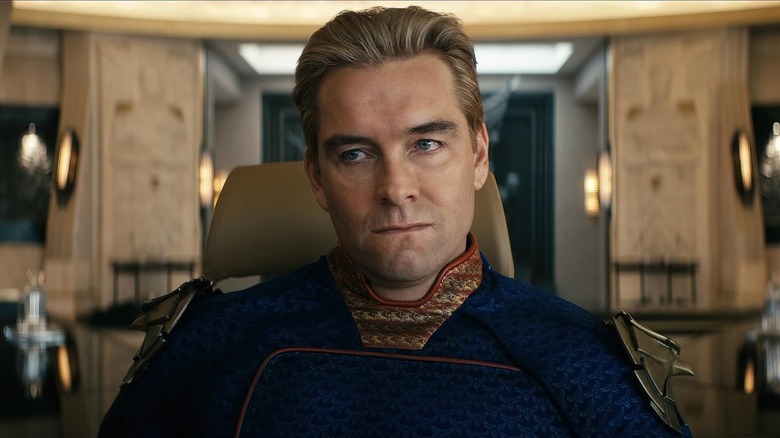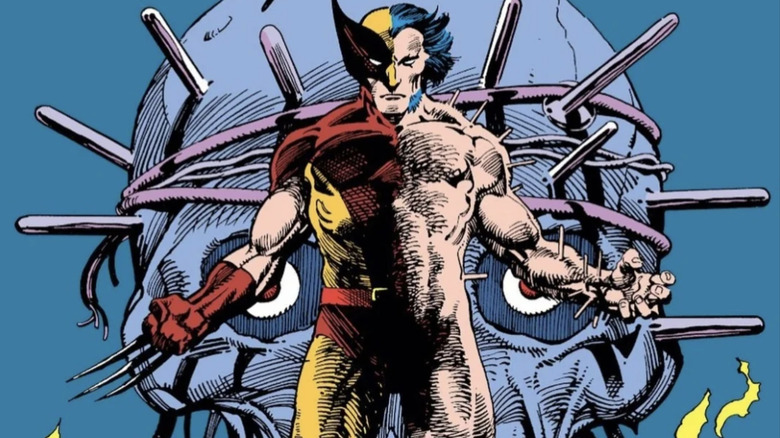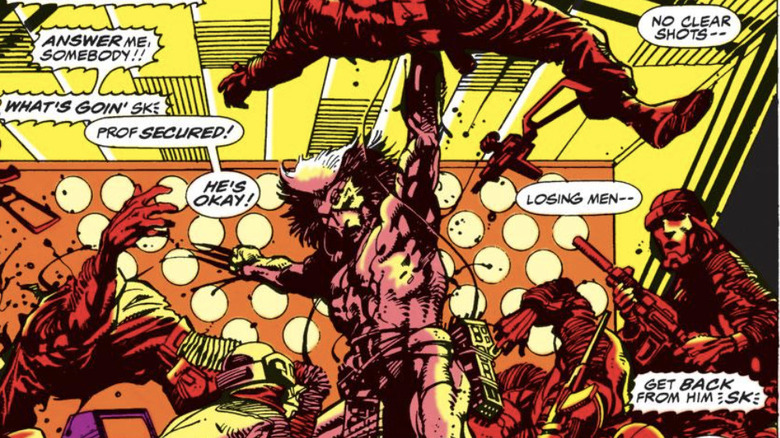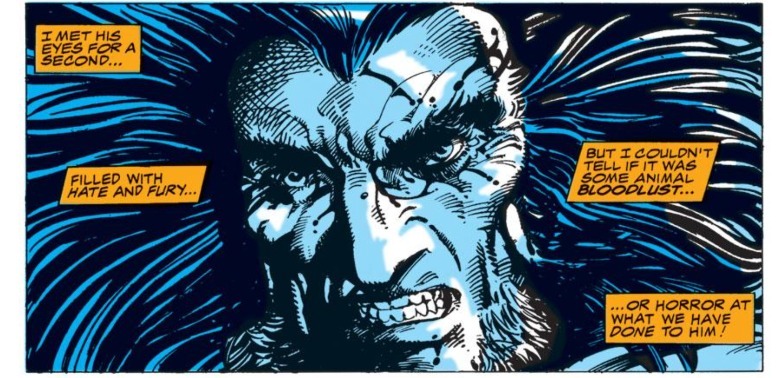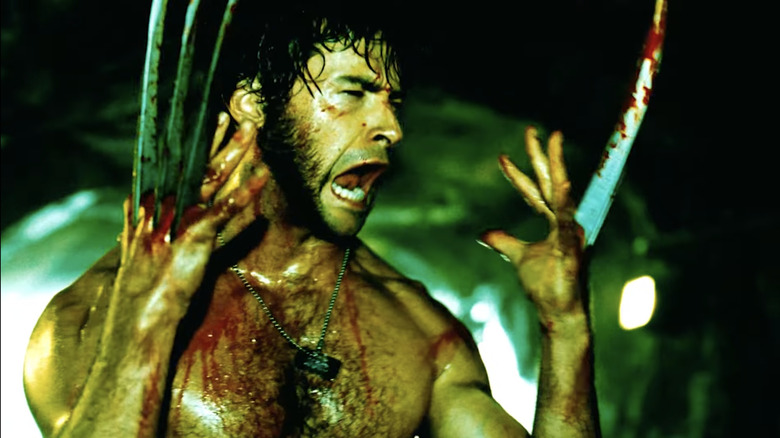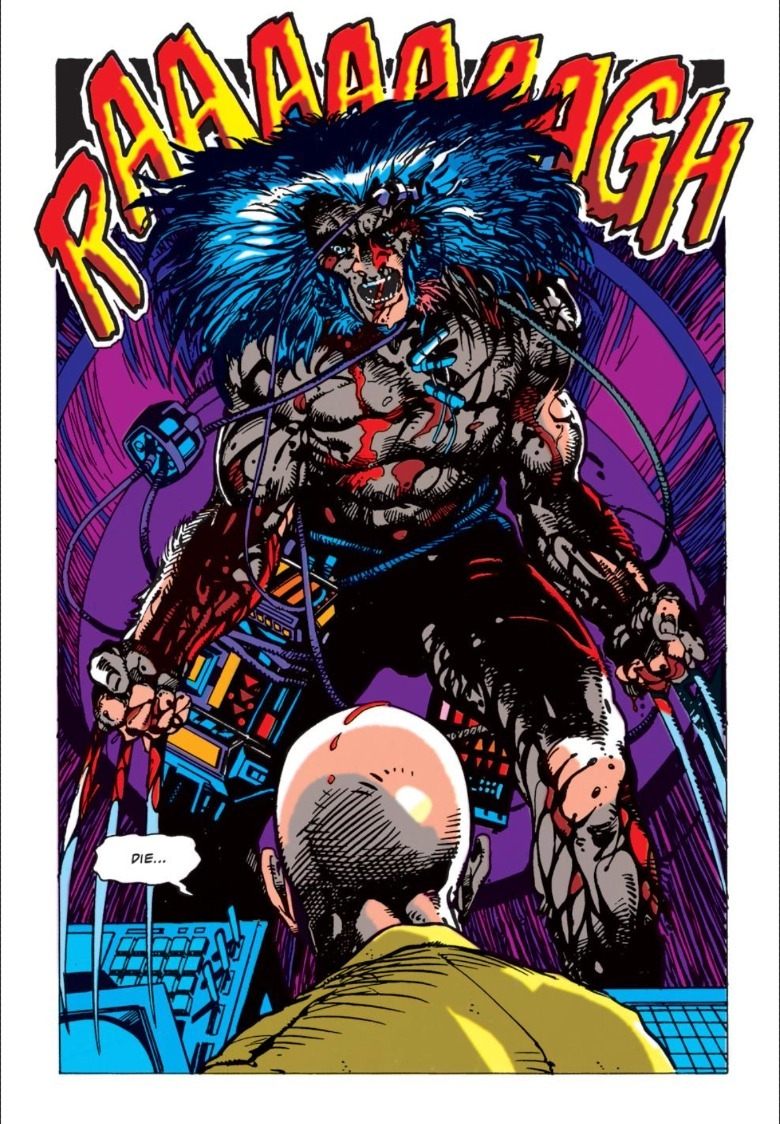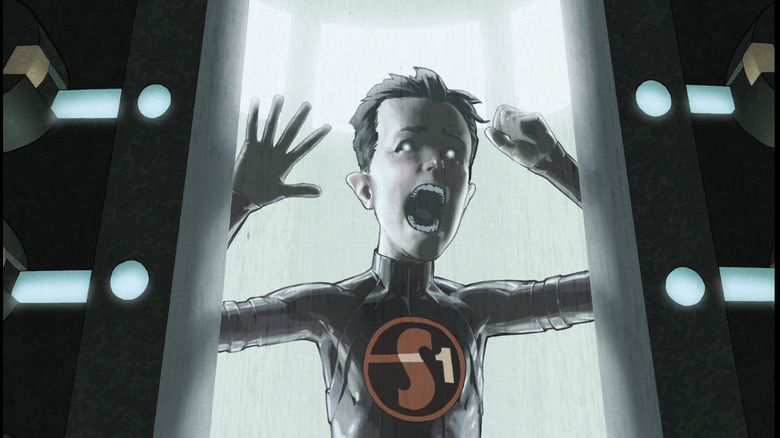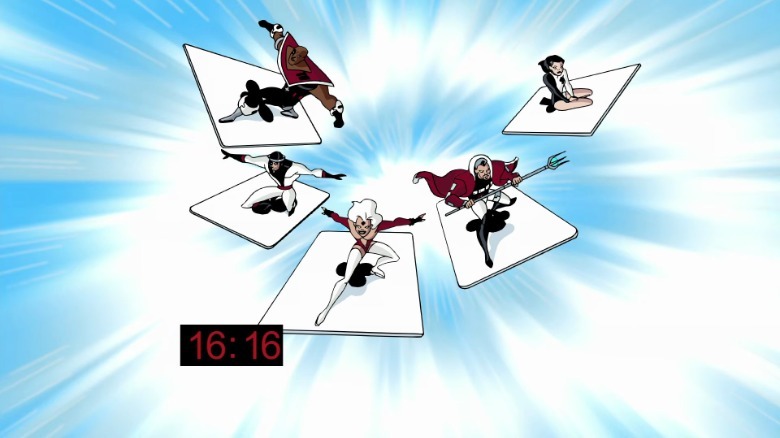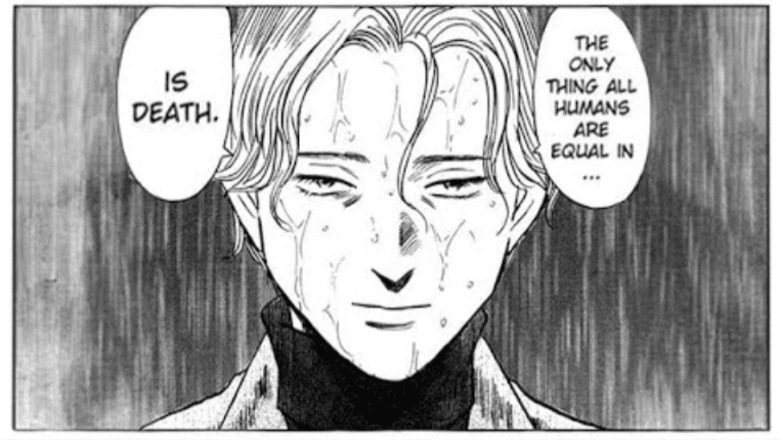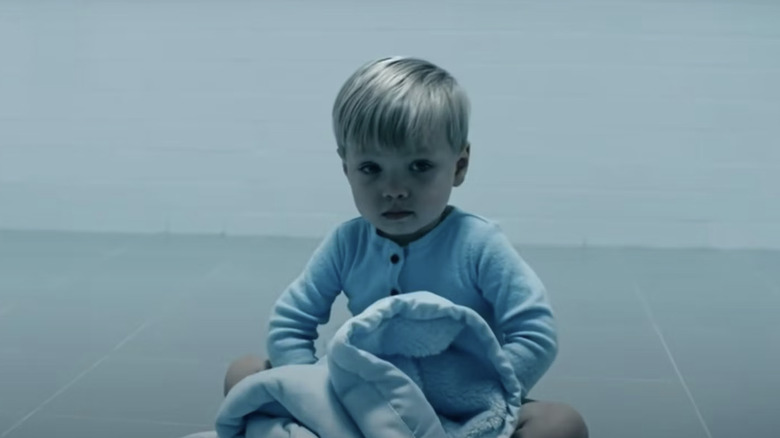The Boys Season 4 Calls To Mind A Classic Marvel Comic
Spoilers for "The Boys" season 4 ahead.
It's well-established on "The Boys" by now that Homelander (Antony Starr) was raised like a lab rat. As a test tube baby created by the Vought International corporation to be the world's greatest superhero, he grew up around scientists who were cold and terrified of him. To test the limits of his power, he had to endure torturous "exams" like being set on fire and or having a drill pressed against his head. Both Homelander's powers and his evil are the result of nurture, not nature.
His longing for love is why Homelander lets Vought execs like Madelyn Stillwell (Elisabeth Shue) and Stan Edgar (Giancarlo Epositio) wield power over him, and why when Homelander met his biological father, Soldier Boy (Jensen Ackles), he approached like a simpering puppy. It's also the reason that Homelander wants to be involved in the life of his own son, Ryan (Cameron Crovetti): to ensure that Ryan doesn't grow up without a father the way he did. Too bad Homelander has no idea how to be a dad.
We've gotten glimpses of Homelander's childhood sprinkled throughout the show (and viral marketing, see below).
Season 4 finally brings the adult Homelander back to where it all started. In episode 4, "Wisdom of the Ages," Homelander pays the lab where he grew up a visit (at the urging of his other self in the mirror). He tortures the lab employees one-by-one, putting one in the oven where he once stood — only the scientist isn't as indestructible as Homelander. He walks out covered in their blood, leaving project lead Barbara (Nancy Lenehan) locked in his old room surrounded by corpses.
Homelander's backstory, and his seeking vengeance, call to mind another tortured superhero: Wolverine, who had his time as a lab animal show in Barry Windsor-Smith's 1991 "Weapon X."
Wolverine: Weapon X by Barry Windsor-Smith is a Marvel horror masterpiece
Wolverine famously has a mysterious past; for many years, no-one knew quite where he came from, not even himself. His "real" name, Logan," seemed like it could just be an alias too. His most obvious feature, his Adamantium-coated skeleton (and claws to go with it), was a story that demanded telling. Surely even a mutant like Wolverine couldn't have been born with such features, right?
In 1991, 17 years after Wolverine's debut in "Incredible Hulk" #180, that tale was finally told by Windsor-Smith in "Weapon X," published across "Marvel Comics Presents" #72-84. Windsor-Smith had previously drawn some excellent "X-Men" issues written by Chris Claremont (such as the Storm tale "Lifedeath" in issue #186, or Wolverine facing Lady Deathstrike in issue #205). "Weapon X," though, was all him; he wrote, penciled, inked, colored, and lettered it.
American superhero comics are usually more collaborative, but Windsor-Smith approached "Weapon X" like an auteur. The results are breathtaking; Windsor-Smith simultaneously uses a bright color palette and heavy shading, suggesting both a shadowy atmosphere and garish neon out of a nightmare (a la Dario Argento's "Suspiria" or the original color printing of "Batman: The Killing Joke").
Windsor-Smith also color-codes the comic's text-boxes (many panels are wide shots of Wolverine being tortured while off-panel scientists look on; the color is needed to convey who is saying what), and often arranges them in a u-shape. A text box will begin at the left edge of the page, then the next one will be lower, until the boxes loop around the panel's main subject and reach the right end of the page. This means that the comic's actual art is largely unblocked by text, yet the two never feel disconnected. Windsor-Smith proved himself worthy of handling every part of the comic with this admirable precision.
Weapon X explores the dark side of Wolverine's Marvel Comics history
"Weapon X" is named for the organization that experiments on Wolverine and the code-name they bestow on him. The book doesn't shed light on who Wolverine was before; he's introduced as an alcoholic drifter who washed out of the military. Weapon X's scientists choose him as their subject because his physical record shows he has strong endurance. Wolverine is then abducted outside a bar and has the Adamantium bonded to his skeleton; the claws' creation is a happy accident. (It was retconned later that Wolverine always had claws made of bone, but honestly, that feels like a cheat.)
When Weapon X realizes Logan is a mutant, they become even more comfortable dehumanizing him. Wolverine is chained and caged, referred to as a beast and not a man, has mind-control devices stuffed into his skull so he can be remote-controlled like a puppet, and after he's forced to kill a pack of wolves, the scientists let him sleep among his gore in subzero temperature. Weapon X's professor, a sadist who embodies the moral bankruptcy of military science, once pours scalding coffee on Logan's face all to test if he can react.
When Wolverine eventually breaks free, his captors pay the price. He's initially shown slaughtering them in a dream sequence, but then he escapes for real and corners the project's leads. The comic ends with Logan wandering off into the wilderness, his identity erased and his body forever transformed. The last bit of narration (implicitly taking place earlier in the story) involves a pair of Weapon X staffers (Dr. Abraham Cornelius and technician Carol Hines) admitting they know they're damned for what they've done to Logan.
Weapon X is one of Marvel's most retold comics
"Weapon X" has been revisited in countless "X-Men" stories since, from comic follow-ups to cartoons to movies. The 1992 "X-Men" cartoon season 2 episode "Repo Man" features a flashback to Wolverine getting his Adamantium at Weapon X. The scene rips some dialogue verbatim from the comic, but the experiment and Logan's rampage are obviously toned down for a TV-Y7 rating.
Wolverine's backstory features heavily in the "X-Men" movies, with him having flashes of his Weapon X memories in both the 2000 "X-Men" and "X2: X-Men United." The latter film departed from the comic and reveals Logan volunteered for the experiment; he was already a willing human weapon before he got his claws. The comic's theme that the man who Logan had been wasn't worth remembering becomes even more obvious in the movie.
"X-Men Origins: Wolverine" finally rendered the whole sequence of Wolverine getting his adamantium and... the less said about that film, the better. The sequence is bloodless, lacking sufficient body horror or the unsettling vibe of both the earlier films and "Weapon X" itself. The 2009 animated short "Hulk vs Wolverine" combines both Wolverine's publication debut with Windsor-Smith's "Weapon X," recreating sequences from the comic via an extended flashback.
None of these adaptations, though, hold a candle to the awe-inspiring terror of the original "Weapon X" and Windsor-Smith's art.
Other comics Like Weapon X
"The Boys" comic co-creator Garth Ennis wouldn't appreciate this comparison; he loathes Wolverine, like he does most other Marvel/DC superheroes, and his writing shows it. But Homelander's origin is a superhero trope, one that earns comparisons beyond "Weapon X."
DC Comics' "Flashpoint" depicts an alternate timeline. One of the main changes is that it's a world with no Superman. Thanks to the way the butterflies of the "Flashpoint" world flapped their wings, Kal-El's escape pod landed in the center of Metropolis, not Smallville. He was thus "taken in" by the U.S. military, not the Kent family, and raised in captivity; as an alien, the scientists present had no reservation violating human rights in experimenting on him. Instead of "Clark Kent," he's named "Subject 1." He's kept away from sunlight to keep him from growing strong enough to escape; by the time he's an adult, he's emaciated and incredibly timid.
The "Justice League" cartoon episode "Wild Cards" features the Joker debuting some new henchmen: The Royal Flush Gang. Previously, they were five superpowered teenagers raised in a government laboratory. The Joker busted them out, gave them a playing card motif, and let them loose on the world they'd been walled off from.
Looking outside superhero comics, the thriller manga "Monster" by Naoki Urasawa features similar experiments. The main antagonist of "Monster" (set in 1990s Germany) is a young, blond serial killer named Johan Liebert. Johan, the product of eugenics experiments, was raised in Soviet childcare facility 511 Kinderheim. Run by state scientists, it wasn't an orphanage but a social experiment; an attempt to create super-soldiers by beating empathy and emotion out of the boys who lived there.
Johan bears a passing resemblance to Homelander and both villains are cautionary tales of how if you don't give children the love they need, then you teach them to be a monster.
The Boys and Weapon X condemn human experimentation
Circling back to "The Boys" — Dr. Vogelbaum's (John Doman) regrets about how he raised Homelander feel like an echo of Cornelius and Hines' conversation that closes out "Weapon X." The message of both stories is how easy it becomes to inflict pain on someone when you dehumanize them, or when you tell yourself that their suffering will result in a greater good. There's a reason that "The Boys" traces Homelander's origins back to Nazi Germany.
One of the many horrors of the Holocaust was the Nazis using captive Jewish people and "undesirables" to run medical experiments on live subjects. In the "Boys" universe, the father of the superhuman (via his invention of power-bestowing chemical Compound V) was Nazi scientist Dr. Frederick Vought. It's explicitly said that he developed the compound thanks to human trials at Dachau.
Vought defected to the U.S. in 1944 because he sensed the Nazi's were losing, so he needed a new nation to continue his plans for a master race. His wife and the first superhuman, Stormfront (Aya Cash), sees Homelander as the Nazi dream realized. Sure enough, he has disdain for "mud people" (normal humans) and regards their lives as less than nothing, while raising Ryan to think the same. It's not only his powers that make Homelander think this way, but also how he wasn't brought up among other people and so never saw himself as one of them. If you treat a human being like something else, then eventually they'll become something wild. The Vought scientists in "Wisdom of the Ages" should've remembered that wild things bite.
New episodes of "The Boys" season 4 premiere Thursdays on Prime Video.
